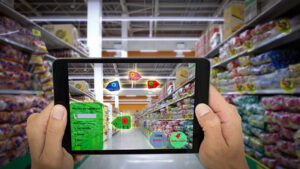
Wall Street Journal
By Isabelle Bousquette
Google Cloud reported that it has developed a new artificial intelligence tool designed to help “big-box retailers” better track the inventory on their shelves, improving on technology that hasn’t worked well in the past.
Last Friday, Google said its algorithm is able to recognize and analyze the availability of consumer packaged goods and products on shelves using videos and images provided by the retailer’s own ceiling-mounted cameras, camera-equipped self-driving robots, or store associates. The tool—now in preview—will become broadly available in the coming months.
Alphabet Inc.’s cloud business unveiled the technology, along with a series of artificial intelligence tools aimed at e-commerce, ahead of this week’s National Retail Federation conference in New York City.
“Lack of timely, accurate information about shelf inventory is a major problem for retailers and so difficult to manage that it is industry standard to just make guesses,” said Robert Hetu, VP analyst for retail at IT research and consulting firm Gartner Inc. Having that information would help retailers pad their lines in a variety of ways, including giving them the chance to replenish out-of-stock items faster, and lose fewer sales opportunities, according to Carrie Tharp, Google Cloud’s vice president of retail and consumer.
“If every retailer just knew what they had in their stores and how much was left on the shelves, their lives would be so much simpler,” she said.
The idea of computer vision-enabled shelf-checking technology has been around for several years, but has not taken off in that time. In part, retailers have been deterred by the cost and complexity of large-scale camera deployment, said Mr. Hetu.
Data has also been a problem, said Ms. Tharp. Retailers have not historically had access to thorough, organized and labeled data on all their product offerings, she said. Another challenge has been building the AI model itself, which needs to understand how to recognize a product in imperfect, real-life conditions, including from different angles, in different lighting and when seasonal packaging changes, Google Cloud said.





